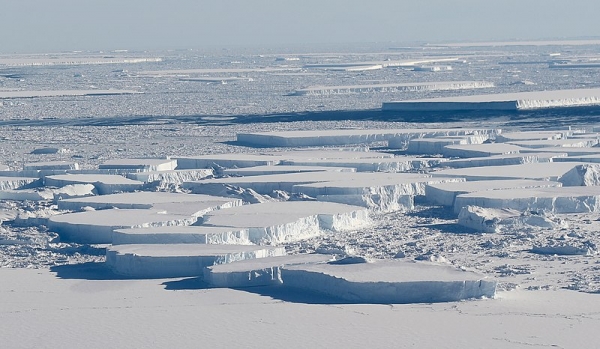In 2002, an area of ice about the size of Rhode Island dramatically broke away from Antarctica as the Larsen B ice shelf collapsed. A new study of the conditions that led to the collapse may reveal warning signs to watch for future Antarctic ice shelf retreat, according to a Penn State-led team of scientists.
“The collapse of the Larsen B ice shelf is generally thought of as an independent event,” said Shujie Wang, assistant professor of geography at Penn State. “Our work shows that it was the last phase in a calving sequence that began in 1998 and was controlled by both atmospheric and oceanic warming anomalies that weakened the ice shelf structure over time.”
Ice shelves are floating tongues of ice connected to land but extend out and float on ocean water. Scientists have long known that warming air and ocean temperatures melt and weaken ice shelves from the surface and the subsurface, but the exact processes leading to collapse are not well understood.
And because ice shelves act as a buttress, holding back glaciers on land flowing toward the ocean, understanding how they will react to continued warming is important for getting sea-level rise predictions right, the scientists said.
Read more at Penn State
Photo Credit: NASA ICE via Wikimedia Commons


